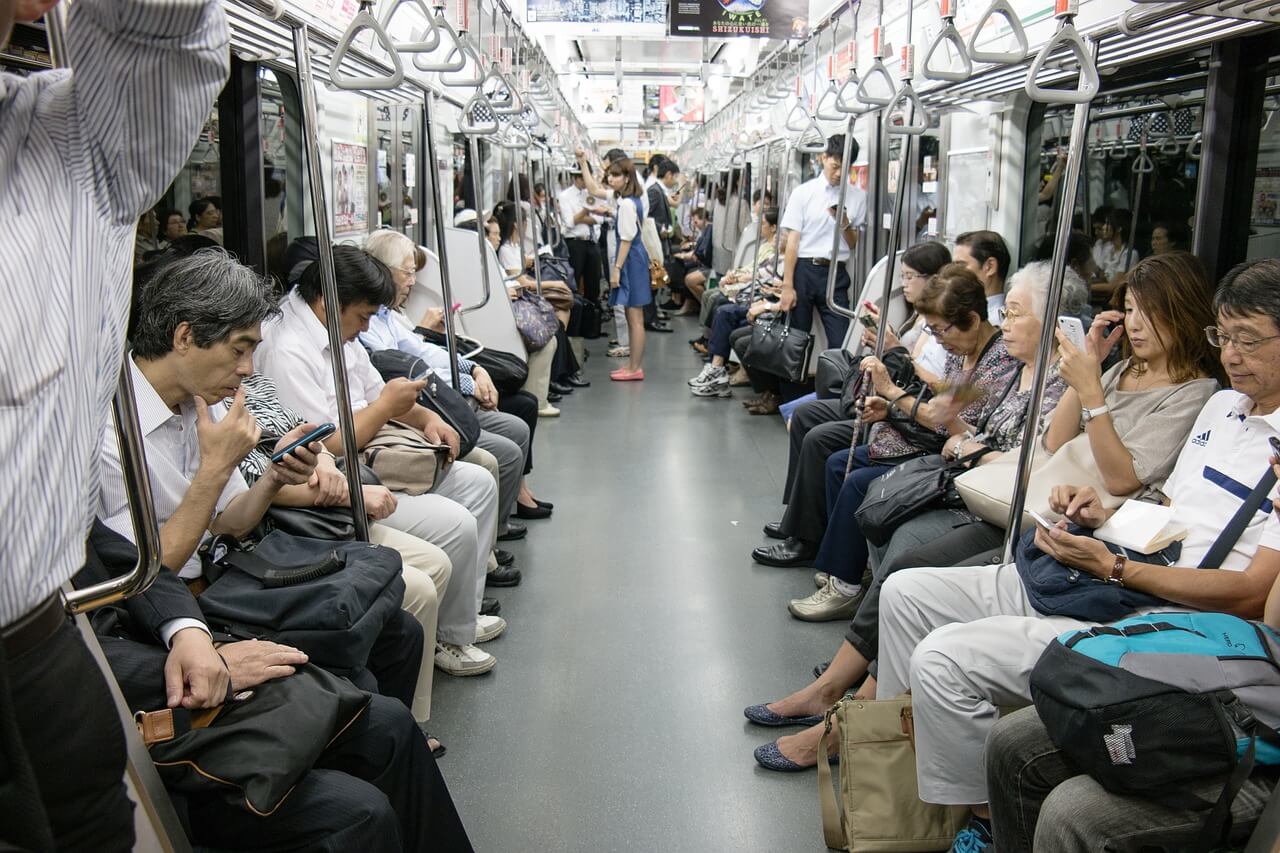Visiting or living in Japan’s capital? With all the fuss around ticket machines, cash, and hopping through Tokyo’s train station gates, you’ll wish navigating the system could be easier. Luckily, there’s a way!
There are several Tokyo train passes that can make catching trains in the capital easier. Tokyo’s special JR Pass and the Pasmo Passport are two options for tourists while a regular Pasmo card is better for residents. They’ll allow you to mostly avoid ticket machines and may reduce fare costs.
Read on to find out the best way to get around Tokyo for every situation.
Tokyo Public Transit Layout

The first thing to understand when deciding whether or not to get a train pass for Tokyo is how the public transportation system is laid out.
Tokyo’s JR train and subway system is famously complicated, looking more like a maze than a way to get from A to B. But you only really need to understand one thing for now: Tokyo is split up into three main systems:
- Japan Rail in Tokyo
- The Tokyo Metro subway
- Buses
Why do you need to know that? Well, some passes only work with certain systems.
Now, there are a few routes you can go down depending on your needs. The first is buying physical train tickets every time you jump on a train, something we went over in a previous post. The others may be more convenient in the long run.
The JR Pass in Tokyo
Heard of the JR Pass? That wonderful way of making a one-time payment for a week or more of train travel? If you’re planning on bouncing all over Japan, it may be a good idea to sign up for one. It can even take you to Ghibli’s museum or some of Japan’s most famous onsen in the area!
Only non-Japanese, non-residents of Japan can apply for the JR Pass, and it’s usually only worth it if you plan on using the train a lot.
If you need help deciding whether the Japan rail pass is right for your next trip, we have an article that breaks down the types and cost.
Does the Japan Rail Pass Cover Tokyo Subway?
Unfortunately, the Japan rail pass that gives you access to JR trains throughout the country doesn’t work on the Tokyo subway. It only applies to trains operated by Japan Rail. However, there are several JR trains that run throughout Tokyo that may make it worth your money if you make day trips.
Different JR Passes for Tokyo
There are a few different types of JR passes that apply to the Tokyo area. Once again, these passes will likely only be worth it if you plan on doing the occasional daytrip outside the city to places like Mount Fuji or Nikko. Some even stretch as far as Hokkaido.
Here’s a breakdown of the JR East rail passes. Adult fees apply to everyone from 12 years old and on.
| Pass Name | Applicable Area | Cost (¥) | Length in Days |
| JR Tokyo Wide | JR East trains in and around Tokyo (Fuji, Nikko included) | Adult: 10,180Child: 5,090 | 3 |
| JR East Pass (Tohoku area) | JR East trains in Tohoku (Tokyo area and north to Aomori) | Adult: 20,000Child: 10,000 | 5 |
| JR East Pass (Nagano, Niigata area) | JR East trains in Tokyo and nearby prefectures like Nagano and Niigata | Adult: 18,000Child: 9,000 | 5 |
| JR East-South Hokkaido | Same as the Tohoku pass, but with south Hokkaido (Sapporo) | Adult: 27,000Child: 13,500 | 6 |
| Hokuriku Arch | JR East AND West trains along the stretch of railway from Tokyo to Toyama, and finally Osaka | Adult: 25,500Child: 12,750 | 7 |
| Tokyo 1-Day Ticket | Tokyo-exclusive pass applying to JR East and Tokyo Metro | Adult: 1,600Child: 800 | 1 |
| Tokyo Metro District | Applies only to JR East trains in Tokyo (doesn’t include Metro) | Adult: 760Child: 380 | 1 |
Pasmo Card
Not a tourist? Or maybe you are and don’t plan on making many trips out of the Tokyo metro area.
In that case, the Pasmo card might be the best option for you. It’s an IC card (integrated circuit) that allows you to store up to ¥20,000 for later use. Just tap it at an IC card turnstile and zip through to the train platform.
Not only can it be used on trains and subways, but you can also tap your Pasmo card at any bus that has an IC reader (there will be signs).
As an added bonus, the Pasmo card can be used at a large number of shops and vending machines throughout Tokyo. Think of it as a debit card that you top up when it’s running low.
The Pasmo Passport
As an added option, Pasmo offers a special card for tourists that you can use for 4-weeks. It’s called the Pasmo Passport and it has all the same uses as the regular card while also giving the user access to special deals at shops and restaurants. It also has a special design that makes a cute souvenir.
How Much Does a Tokyo Train Pass Cost?
The JR East passes that apply to the Tokyo area cost ¥760 and ¥1,600 yen for different 1-day passes. More widely applicable passes cost at least ¥10,000 for three days, as seen above. Finally, you have the option of IC cards that cost ¥2,000 (500 for a deposit and 1,500 for the initial charge).
In the case of the Pasmo Passport, there’s no refund on the cards as they expect tourists to take them home as souvenirs. Instead of calling it a deposit, they refer to the ¥500 fee as an “issuing fee.”

Photo by Mak
Is a Tokyo Subway Pass Worth It?
If options like Pasmo cards and JR Passes don’t suit you, Tokyo Metro offers 24, 48, and 72-hour subway passes. They’re ¥800, ¥1,200, and ¥1,500 respectively and are half-price for kids under 12. This can easily be worth it for tourists moving all day between the many neighborhoods of Tokyo.
If you’re interested in a Tokyo Metro pass, take a look at their website for more information.
Also, consider the train ticket prices on some of your desired routes to get a better sense of whether a day-pass would be a good choice for you.
Conclusion: What’s the Cheapest Way to Travel Around Tokyo?
If you’re planning on seeing all of Tokyo’s neighborhoods in a short span of time, a metro pass could be the cheapest option. Just going from Akihabara to Shibuya costs ¥400 round trip, so if you make one more similar trip in a day, you’ve already paid off the cost of a 24-hour pass.
Pasmo is another good option for those who are more concerned with convenience. And if you think you’ll want to make day trips out of Tokyo, you’ll likely be better off with a JR Pass.




